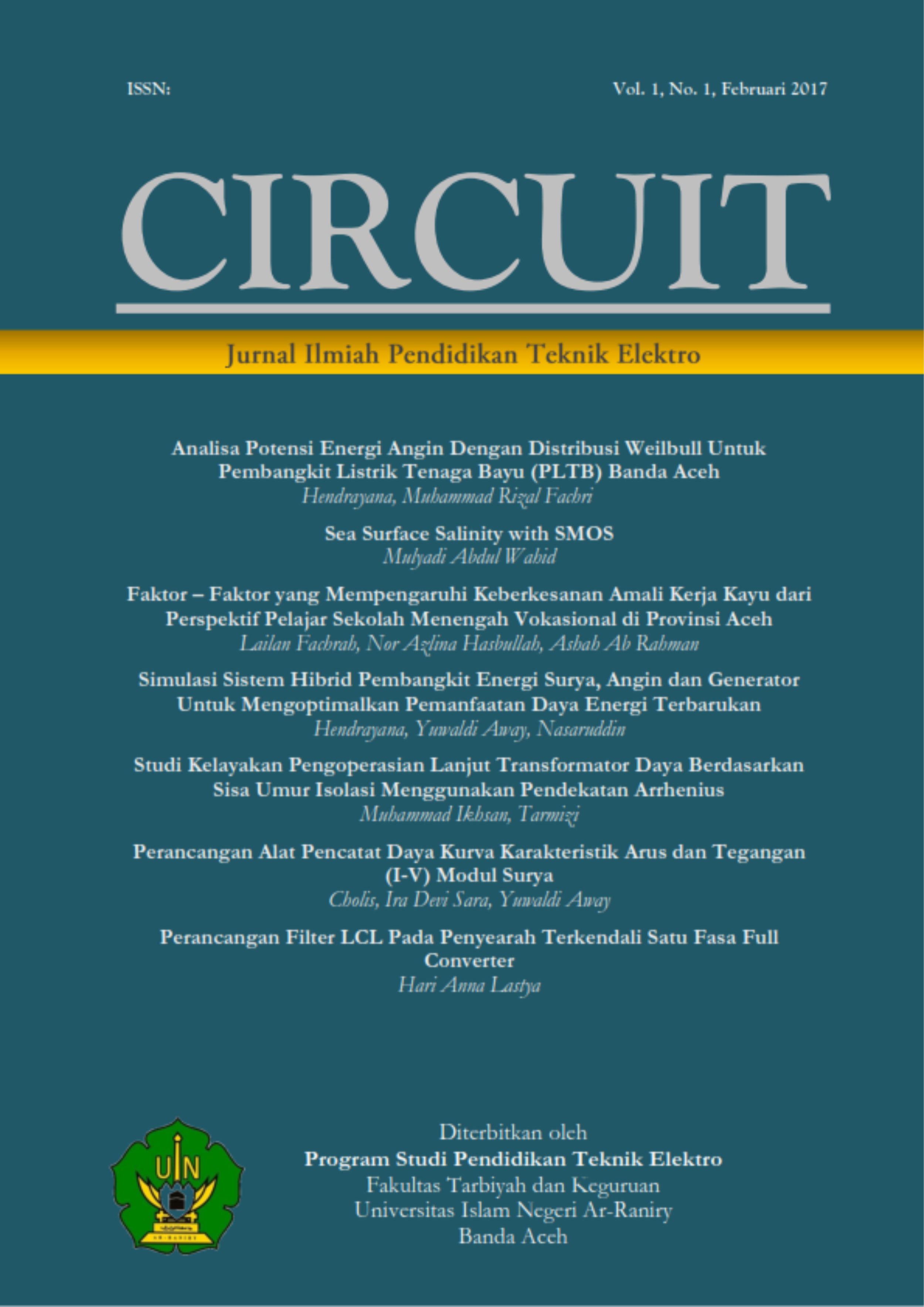Pengaruh Teknik Cooperative Learning Berbasis Metode Think Pair Share Untuk Meningkatkan Pemahaman Materi Dasar-Dasar Elektronika
DOI:
https://doi.org/10.22373/crc.v5i1.8085Keywords:
Think Pair Share, Cooperative Learning, Quasi EksperimenAbstract
The accelerated development of the technological world cannot be separated from the materials of electronic components. Vocational schools are the most dominant schools in discussing electronics, but there are still many students who have abilities below the graduation standards that have been set in the subject of electronics basics. One of the causes of low learning outcomes is due to the lack of involvement of students in the learning process. Therefore it is necessary to think pair share method to spur student activeness and creativity during learning. The technique in doing this method is by students thinking, discussing and sharing material concepts directly with their classmates controlled by the teacher in material supervision. In addition, by using this method students are able to solve problems during the learning process well. This type of research is a Quasi Experiment with Posttest Only Control Design. The subjects of this study were students of class X SMK Negeri 1 Pariaman which consisted of two classes, namely X TITL-1 and X TITL-2. From these two classes were selected randomly where class X TITIL-1 was the experimental class and class X TITL-2 was the control class. To see students' initial abilities, an analysis of the posttest was carried out in the subject of Understanding the Basics of Electronics. Collecting data in this study using a learning outcome test (posttest) in the form of objective questions of 25 items. The data were analyzed using the two-mean difference test (t-test). Based on the results of the study, the posttest mean percentage of the experimental class was 77.14% and the control class was 55.14%. The results of this study indicate that there is a significant increase in student learning outcomes with a comparison of the think pair share method which is better than the conventional method.
References
Afthina, H., Mardiyana, and I. Pramudya. 2017. “Think Pair Share Using Realistic Mathematics Education Approach in Geometry Learning.” Journal of Physics: Conference Series 895(1).
Sunita M. Dol. 2015. “TPS(Think-Pair-Share): An Active Learning Strategy to Teach Theory of Computation Course.” International Journal of Information Technology and Computer Science 7(9):52–58.
Malahayati, Fathurrahman, Mawardi, Mouliza Astari, Khairan Ar. 2019. “Penggunaan Model Pembelajaran Make a Match Untuk Meningkatkan Hasil Belajar Peserta Didik Pada Pelajaran Menggambar Teknik.” CIRCUIT: Jurnal Ilmiah Pendidikan Teknik Elektro 4(2):130–37.
Satria, Habib, and Andri Basir. 2020. “Implementasi Media Interaktif Berbasis Macro Mediaflash Pada Mata Pelajaran Sistem Pengendali Elektromagnetik.” JUPITER (Jurnal Pendidikan Teknik Elektro) 05(September):16–23.
Shih, Ying Chun, and Barry Lee Reynolds. 2015. “Teaching Adolescents EFL by Integrating Think-Pair-Share and Reading Strategy Instruction: A Quasi-Experimental Study.” RELC Journal 46(3):221–35.
Wahyuni, Sri. 2020. “Alternatif Media Pembelajaran Berbasis Perangkat Lunak Pada Bidang Elektro.” CIRCUIT: Jurnal Ilmiah Pendidikan Teknik Elektro 4(1):33.
Downloads
Published
Issue
Section
License
Authors who publish in CIRCUIT: Jurnal Ilmiah Pendidikan Teknik Elektro agree to the following terms:
- Authors retain copyright and grant the journal right of first publication with the work licensed under a Creative Commons Attribution-ShareAlike 4.0 International License (CC BY-SA 4.0) that allows others to share and adapt the work with an acknowledgement of the authorship and initial publication in this journal
- Authors are able to enter into separate, additional contractual arrangements for the non-exclusive distribution of the journal's published version of the work (e.g., post it to an institutional repository or publish it in a book), with an acknowledgment of its initial publication in this journal.
- Authors are permitted and encouraged to post their work online (e.g., in institutional repositories or on their website) prior to and during the submission process, as it can lead to productive exchanges, as well as earlier and greater citation of published work. (See The Effect of Open Acces)

